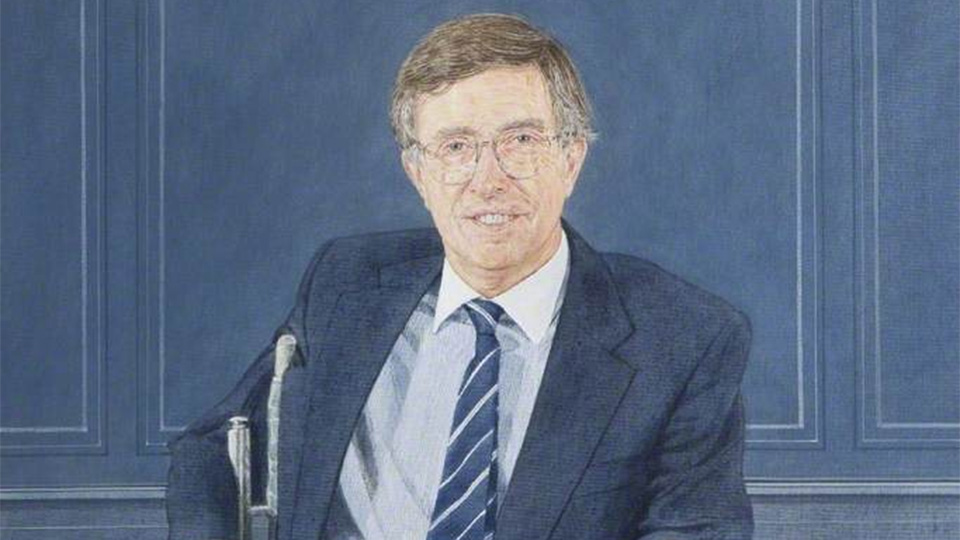One of the most influential engineers of his generation, Sir David Evan Naunton Davies, known by many as Den, had a long association with Loughborough. In 1969 he became one of the University’s first industrial professors, who were eminent individuals in industrial fields, and in 1988 he was appointed as the fifth Vice-Chancellor of Loughborough University of Technology (as it was then known), remaining in post for five years.
Born in Cardiff in 1935, David studied electrical engineering at the University of Birmingham, graduating from his Batchelor’s degree in 1960 before embarking on PhD research at Birmingham.
In 1971 he was appointed Professor of Electrical Engineering at University College London (UCL), becoming head of the department of Electronic and Electrical Engineering in 1985 and serving as UCL Vice-Provost for two years from 1986.
In 1988 Sir David was appointed as Vice-Chancellor of Loughborough University of Technology. Under his leadership the University enjoyed a significant period of growth. Student numbers increased significantly, with four new halls of residence built to accommodate the expanding population. Ambitious plans for the University’s science and enterprise park began in 1990, when British Gas chose to locate its Gas Research Technology Centre, now the Holywell Park Conference Centre and Charnwood Building, on the site. And Burleigh Court, the University’s on-site hotel and conference venue, was built, opening in 1991.
Sir David also oversaw the first ever royal visit to Loughborough University by Her Majesty The Queen in 1989.
Following his tenure as Loughborough Vice-Chancellor, Sir David took up the post of Chief Scientific Adviser to the Ministry of Defence, before going on to serve from 1998 to 2000 as Non-Executive Chair of the Defence Evaluation and Research Agency and later Chair of the MoD Nuclear Research Advisory Council.
During this period, he produced a report to the Deputy Prime Minister on the options available to improve the safety of rail travel in the wake of the disastrous train crash at Ladbroke Grove in October 1999. He showed that the cheaper and less technically advanced train protection and warning system that the rail industry was already installing network-wide would save more lives over 20 years than the far more expensive automatic train protection systems. His recommendations were endorsed by the ensuing public inquiries. He was later asked to become Chair of Railway Safety, a new company set up to promote and oversee rail safety issues.
Throughout his career Sir David’s research work in antenna arrays, radar, signal processing, and optical fibre was highly regarded – he won the Rank Prize for optoelectronics in 1984 and the Institution of Electrical Engineers’ (IEE) Faraday Medal in 1987. He was elected to the Fellowship of Engineering in 1979 and as a Fellow of the Royal Society in 1984. He served as President of the Institution of Electrical Engineers from 1994-95, was appointed President of the Royal Academy of Engineering in 1996 and served on the committees of many national bodies, including the BBC Engineering Advisory Committee and the Royal Society’s Science Inquiry Committee.
He was awarded a CBE in 1986 and was knighted for services to science and technology in the 1994 New Year Honours.
The Sir David Davies building at the heart of the science and engineering facilities on the main University campus was named in his honour, and a portrait of Sir David by the acclaimed artist Bryan Organ, who studied and taught at Loughborough College of Art, hangs in the reception area of the Hazlerigg Building, the University’s management headquarters.
